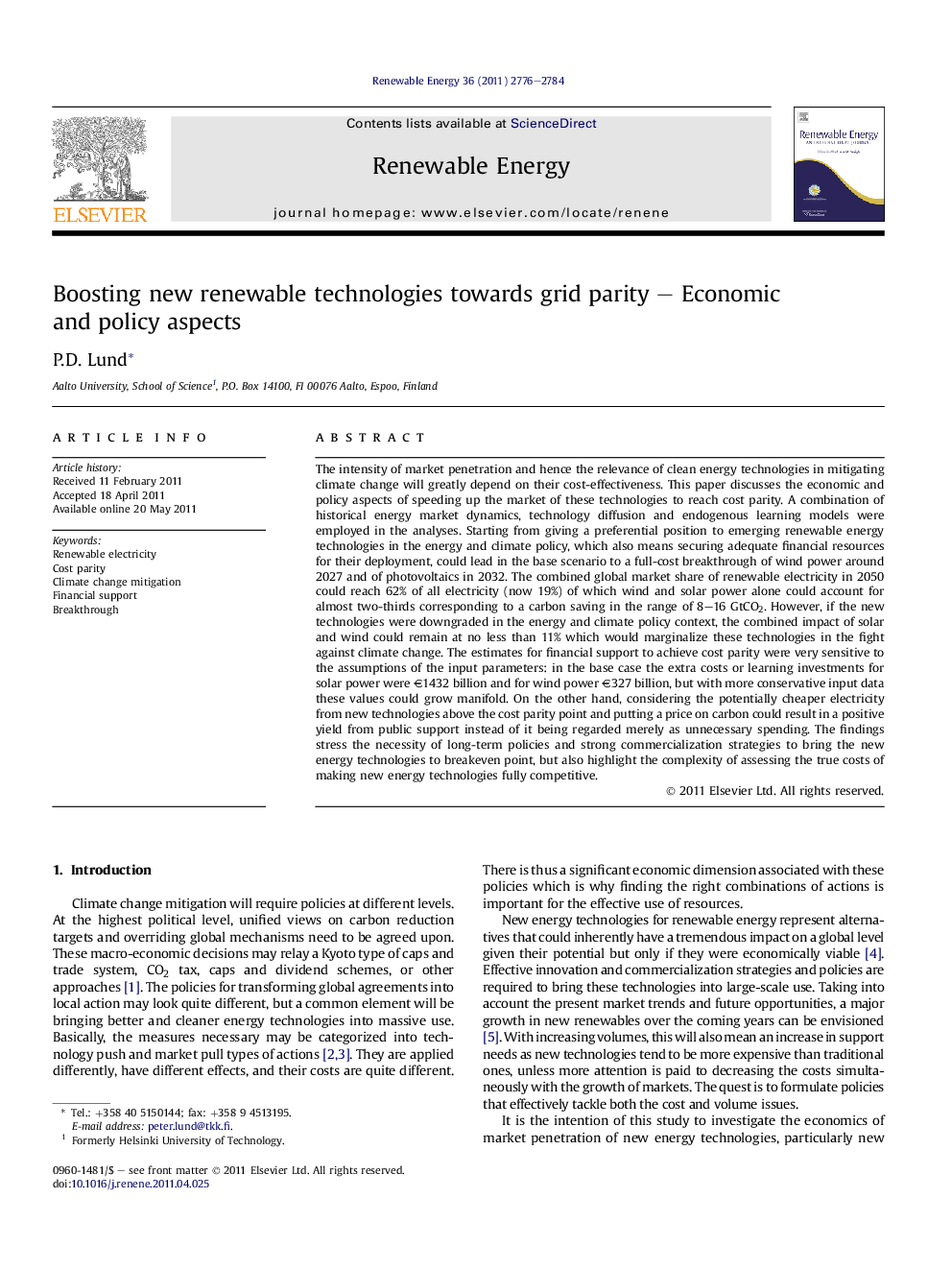| کد مقاله | کد نشریه | سال انتشار | مقاله انگلیسی | نسخه تمام متن |
|---|---|---|---|---|
| 301314 | 512503 | 2011 | 9 صفحه PDF | دانلود رایگان |

The intensity of market penetration and hence the relevance of clean energy technologies in mitigating climate change will greatly depend on their cost-effectiveness. This paper discusses the economic and policy aspects of speeding up the market of these technologies to reach cost parity. A combination of historical energy market dynamics, technology diffusion and endogenous learning models were employed in the analyses. Starting from giving a preferential position to emerging renewable energy technologies in the energy and climate policy, which also means securing adequate financial resources for their deployment, could lead in the base scenario to a full-cost breakthrough of wind power around 2027 and of photovoltaics in 2032. The combined global market share of renewable electricity in 2050 could reach 62% of all electricity (now 19%) of which wind and solar power alone could account for almost two-thirds corresponding to a carbon saving in the range of 8–16 GtCO2. However, if the new technologies were downgraded in the energy and climate policy context, the combined impact of solar and wind could remain at no less than 11% which would marginalize these technologies in the fight against climate change. The estimates for financial support to achieve cost parity were very sensitive to the assumptions of the input parameters: in the base case the extra costs or learning investments for solar power were €1432 billion and for wind power €327 billion, but with more conservative input data these values could grow manifold. On the other hand, considering the potentially cheaper electricity from new technologies above the cost parity point and putting a price on carbon could result in a positive yield from public support instead of it being regarded merely as unnecessary spending. The findings stress the necessity of long-term policies and strong commercialization strategies to bring the new energy technologies to breakeven point, but also highlight the complexity of assessing the true costs of making new energy technologies fully competitive.
► Renewable electricity (RES) could reach a 62% share of all electricity by 2050.
► Share of new renewable technologies could amount 43% of all electricity in 2050.
► New RES require preferential position in investments and policy for breakthrough.
► Support to reach grid parity, raises electricity price at most 5–10%.
► Financial support to reach cost parity need not be conceived as sunk cost.
Journal: Renewable Energy - Volume 36, Issue 11, November 2011, Pages 2776–2784